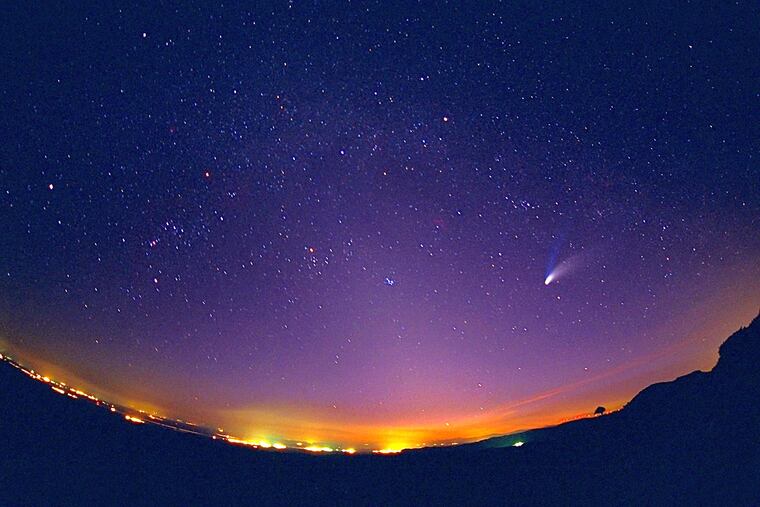Philly-area heat indexes heading to triple digits as ‘dog days’ gain steam
A heat advisory has been posted as another heat wave crests.

Temperatures reached the low 90s Monday afternoon, and with heat indexes forecast to reach triple digits, the National Weather Service has a heat advisory in effect for the entire region for much of Monday.
With the region capped under a particularly uncomfortable air mass, another advisory is possible Tuesday.
And underscoring the obvious to anyone who is spending time outside, the Delaware Valley Regional Planning Commission has issued a "code orange" air quality alert for the entire region, because this will be a banner day for a harvest of ground-level ozone.
But this heat wave should be relatively short-lived — over by Thursday — in what generally has been quite a benign summer.
This is only the second heat wave of the season for Philadelphia — the first was June 29 through July 5.
So far, the city has reported just one heat-related death, James Garrow, spokesperson for the Health Department, affirmed Monday.
>> READ MORE: These Philadelphia neighborhoods get the hottest in a heat wave
Monday's forecast high of 95 in the city wouldn't be in the same zip code as the record for the date, 103, set 100 years ago. On the following day, Aug. 7, 1918, the official temperature hit 106.2, which is still the highest-ever recorded in Philadelphia.
In fact, meteorologists have a word for weather such as this: It's called August.
These truly are the "dog days," a phrase, by the way, that has nothing to do with panting dogs. It is derived from the late-summer appearance of Sirius, the dog star.
As we've noted before, Sirius is the brightest star in the constellation Canis Major, and it evidently is a whole lot brighter than the ancient Romans, who believed it added to the earth's heat.
>> READ MORE: The best icy desserts in Philadelphia
Sirius is 20 times brighter than our sun, but it also happens to be 8.7 light years away, so, no, it can't be adding much to the temperature in Philadelphia. We'll call it an honest mistake among the Romans, who did have quite a few good ideas otherwise; the Coliseum certainly has outlasted Veterans Stadium.
August has a well-earned reputation for sultriness, with the ground well-baked by weeks of the most intense solar energy of the year.
>> READ MORE: Tips for keeping electric bills down during heat wave
In addition to Aug. 6, historically temperatures have hit 100 or better on the 7th, 8th, 9th, and 11th.
But the 6th does represent a mile marker of sorts.
The "normal" daytime high slips to 86 in Philadelphia, down from the summer peak of 87 that has held serve since July 3. That's a sign as clear as the brown leaves starting to appear on lawns, that summer, too, will end.